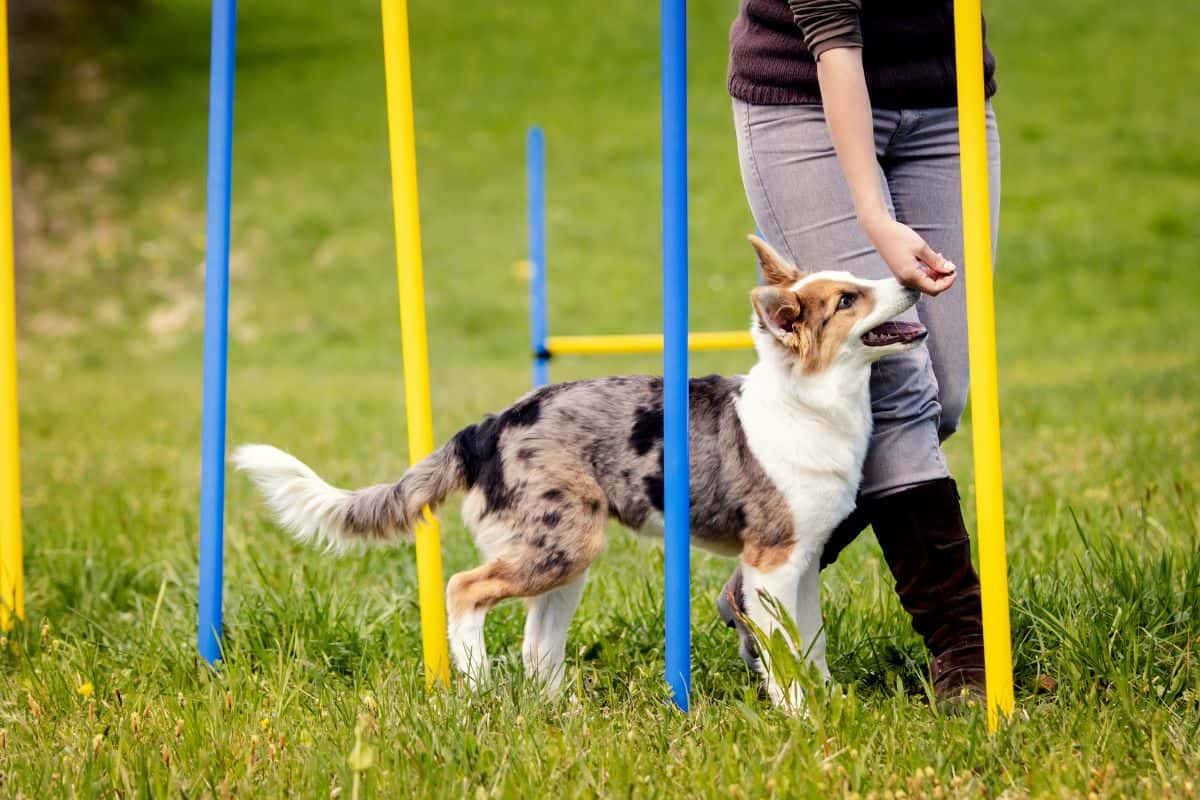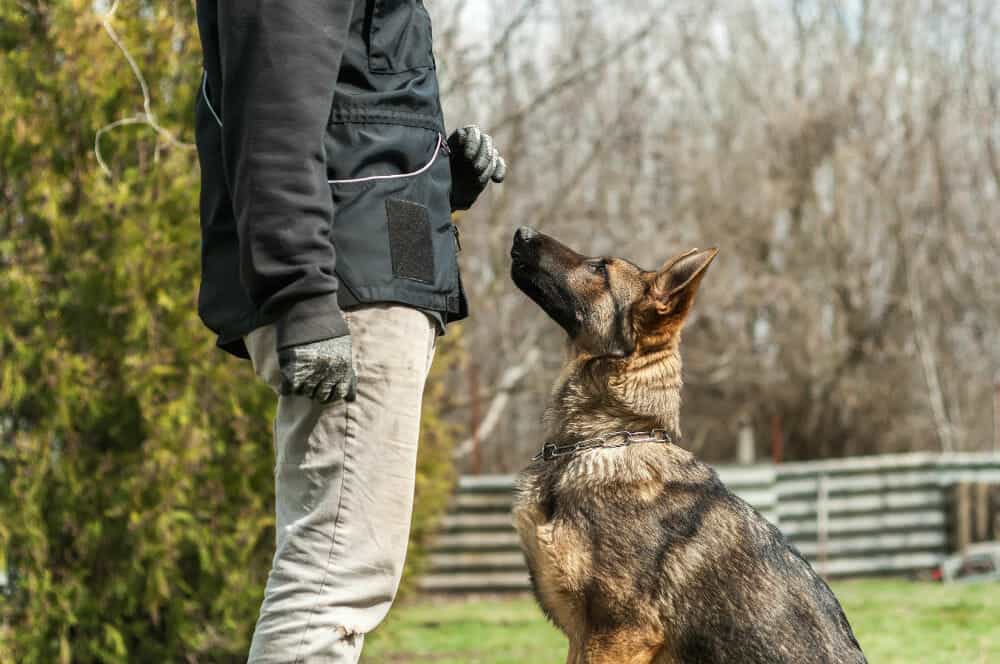The Advantages of Very Early Dog Training for a Well-Behaved Animal
The Advantages of Very Early Dog Training for a Well-Behaved Animal
Blog Article
Vital Tips for Successful Dog Training: A Guide for Pet Owners
Effective canine training is a complex process that requires a critical method customized to both the family pet's temperament and the owner's purposes. Understanding how to navigate these barriers can significantly improve the training experience, eventually transforming the relationship in between proprietor and pet.
Recognizing Dog Behavior
Understanding canine actions is necessary for efficient training and promoting a harmonious connection between dogs and their proprietors. Canines interact primarily through body movement, vocalizations, and actions, making it critical for owners to analyze these signals properly. Identifying a canine's pose, tail setting, and ear orientation can give understandings right into its mood. For example, a wagging tail does not constantly show joy; it can likewise signify excitement or stress and anxiety.

Socialization plays a considerable duty in canine actions; exposure to different environments, people, and other pets can dramatically affect a pet's personality. Aspects such as breed characteristics and specific personality must assist training methods, as some breeds may have specific behavioral traits that necessitate customized strategies. By understanding these elements, proprietors can produce a supportive environment that urges positive behavior, bring about successful training outcomes and a much deeper bond with their family pets.
Establishing Regular Commands
Effective interaction with your canine starts with establishing regular commands. This foundational element of training is crucial for cultivating understanding in between you and your animal. Uniformity in the commands you use makes sure that your dog can dependably link particular words or expressions with the desired habits.
When picking commands, select clear, distinctive words that are easy to claim and distinguish from each other. Avoid utilizing similar-sounding commands that might confuse your pet dog. For example, utilizing "rest" and "stay" is ideal, but "sit" and "struck" can lead to misunderstandings.
In addition, preserve the very same tone and volume for every command. Dogs are sensitive to vocal hints, so differing your tone can create complication.
It is equally important to guarantee that all relative are on the same web page regarding the commands made use of. A united front in command use will avoid combined signals and reinforce the knowing procedure.
Favorable Support Methods
The power of favorable support in pet dog training hinges on its ability to urge preferred behaviors via incentives and praise. This strategy is based in the principle that actions complied with by beneficial end results are a lot more likely to be duplicated. By including positive support into your training routine, you can successfully shape your pet's behavior in a positive way.
To implement favorable reinforcement, it's important to recognize what inspires your pet, whether it be treats, playthings, or verbal appreciation. When your canine performs a wanted action, such as remaining on command, instantly compensate them with a treat or love. This organization between the command and the favorable result reinforces their understanding.
It's important to timing the incentives properly; supplying the support within seconds of the preferred actions helps your pet dog make the connection (dog training). Furthermore, uniformity is key-- make sure that all household members utilize the very same commands and reward systems to prevent complication

Progressively, you can reduce the frequency of deals with as your canine finds out the behavior, transitioning to applaud or recurring incentives. This method not only cultivates a strong bond between you and your dog yet additionally advertises a favorable learning setting, making educating a delightful experience for both.
Socialization and Communication
Constantly revealing your dog to a variety of environments, people, and other animals is important for their social advancement. Socializing must start early, preferably throughout the important home window of 3 to 14 weeks, when pups are visit site most responsive to brand-new experiences. Nonetheless, older pets can additionally gain from recurring socializing initiatives.
Present your pet to different settings, such as parks, pet-friendly stores, and urban areas. This exposure helps them adapt to different stimuli, lowering anxiety and anxiety responses. Encourage positive interactions with other canines and people, making certain that these experiences are controlled and safe to foster self-confidence.
Use structured playdates with courteous canines, as this can boost your pet dog's social skills and teach them ideal behavior. Obedience courses and training sessions likewise provide excellent possibilities for socialization, permitting your canine to connect with others in a supervised setting.
Display your canine's body movement during interactions, as this will certainly assist you evaluate their comfort level. Progressively raise direct exposure More Info to even more difficult scenarios while making sure that each experience declares. A well-socialized canine is more probable to display well balanced behavior, making them a happiness to have in any kind of setting.
Resolving Common Training Difficulties
Every pet dog proprietor will come across training obstacles at some time, no matter their pet's age or socialization level. Determining usual concerns such as stubbornness, diversions, and terror can help in establishing reliable techniques for renovation.

Gradually present distractions as the dog comes to be more proficient in commands. Short, frequent training sessions are likewise efficient in maintaining interest.
Terror can impede a canine's knowing process. Gradual desensitization to the source of anxiety, paired with favorable reinforcement, can aid alleviate anxiety. Perseverance is critical; never ever force a dog right into a circumstance that causes distress, as this might worsen the issue.
Inevitably, understanding and attending to these common obstacles with an organized method will certainly promote a more effective training experience, enhancing the bond in between pet dog and owner while advertising effective understanding.
Final Thought
In summary, effective dog training depends on an extensive company website understanding of canine behavior, the establishment of regular commands, and the application of positive support techniques. Socializing plays a vital role in establishing well-adjusted pets, while resolving typical training obstacles requires persistence and adaptability. By carrying out these essential approaches, animal proprietors can foster a strong bond with their pets and promote preferable behaviors, eventually leading to an unified partnership between people and their canine companions.
Recognizing canine habits is essential for efficient training and cultivating a harmonious connection in between canines and their owners.Socializing plays a significant duty in dog habits; direct exposure to various atmospheres, individuals, and other pets can considerably influence a canine's temperament.The power of positive support in canine training exists in its capability to encourage wanted actions via incentives and praise. By integrating positive support into your training routine, you can properly shape your pet dog's habits in a useful way.
In recap, successful pet dog training depends on a detailed understanding of canine habits, the facility of constant commands, and the application of positive reinforcement techniques.
Report this page